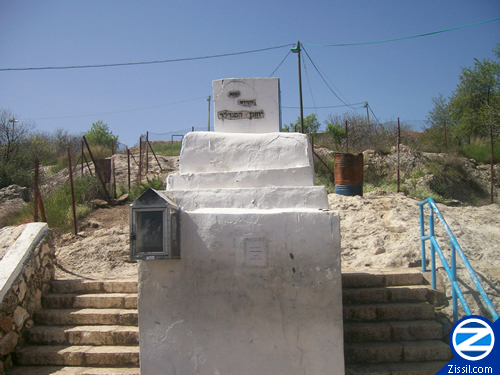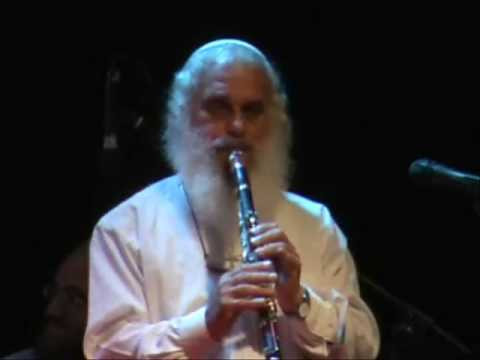6th April 2022 – Shabbat is almost here
And the next week it will be Lag Ba’omer so let’s listen to a tune performed in 1969 at the nocturnal ceremony held by the tomb of Rabbi Yohanan the Shoemaker.
Hello, I hope you are well. I am ok, quite busy again, as next Sunday it is the great day when I will travel abroad again, to Zurich, for a concert with by band Vigüela.
And the next week it will take place Lag Ba’omer. The last year, if you remember, there was a huge tragedy in Mount Meron, where some relevant rabbis are buried and where there are done processions and other celebrations at the time of Lag Ba’omer. I hope this year the attendants will be able to dedicate themselves to the devotion and the celebration.
In the meantime, enjoy the music piece, that is enchanting.
Then, please, spread the word.
| Share this with a friend, right from here |
About Lag Ba’omer
As I already explained in the last year’s edition about Lag Ba’omer, it takes place 7 weeks after the second day of Pesah and several things are celebrated: the end of the plague that was killing the disciples of Rabbi Akiva and it is also the anniversary of the death of Rabbi Shimon Bar Yochai (so it is a celebration of his life).
Bar Yochai is buried in Mount Meron, like the Rabbi Yochanan the Shoemaker. Their tombs are separated 200 meters. Both of them were pupils of Rabbi Akiva and contemporaries. I will talk about Yochanan because the tune we have today is one of the most popular tunes performed at the nocturnal ceremony held at his tomb.
According to the Enclyclopedia of Kivrei Tzadikim:
“Rabbi Yochanan Hasandlar was a fourth generation Tana and one of the main students of Rabbi Akiva. He was born in Alexandria, Egypt. He was a descendant of the royal family of King Dovid.
Rashi and Rebbe Nachman of Breslev were both descendants of Rabbi Yochanan Hasandlar. He is buried in Meron and his Hillula is celebrated on the 29th of Tammuz.”
So, what is a “Tana”? Tana, Tannah or Tanna (plural: tannaim), according to MyJewishLearning, are:
“The Talmudic rabbis whose views are recorded in the Talmudic literature are called Tannaim and Amoraim. Both these terms are also found in the Talmud in connection with learning activity. In this context, a Tanna (‘rehearser’ or ‘teacher’) was a functionary who rehearsed opinions and statements of the teachers of the first two centuries CE;”
And what is a “Hillula”? According to JewishVirtualLibrary it is a festivity:
“especially a wedding celebration (cf. Ber. 30b–31a). Later the term was also used for the anniversary of the death of famous rabbis and scholars because such occasions were often celebrated by popular pilgrimages and rejoicings. According to a late homiletic interpretation (Moses Alsheikh on Job 30:23) the death of a saintly man is a kind of “mystical marriage” of his soul with God. Public hillula celebrations take place on Lag ba-Omer, the traditional anniversary of the death of R. Simeon b. Yoḥai (see *Hillula de-Rabbi
Shimon bar Yoḥai), and on the 14th of Iyyar, the anniversary of the death of R. *Meir Ba’al ha-Nes, at their respective gravesides in Meron and Tiberias, in Galilee.”
This picture of the tomb of Rabbi Yochanan Hasandlar is from the website of Zizzil.com. It is described as the “Kever Rebbe Yochanan Hasandlar on the hill behind the Rashbi in Meron”. Kever means grave.

About the performer, Moshe, Mosa, or Mosha Berlin
The clarinetist who plays the piece we have today is Moshe (or Mosa or Mosha) Berlin, born in Tel Aviv in 1938. You can watch him here, playing Shema Israel, a piece from the repertoire of Leibele Glantz, who we already listened to in his own edition.
About the percussionist Avraham Segal I haven’t found any information. There are also more clarinets than one, but the booklets mentions only these two musicians.
About the recording
We already paid attention to this album, in the edition about the Hassidism and the music. The album is Hassidic Tunes of Dancing and Rejoicing, released in 1978 by Smithsonian Folkways. It is the first issue in the Anthology of Musical Traditions in Israel by the Hebrew University Jewish Music Research Centre. Here you can listen a sampler of the pieces and access the full booklet.
I already explained there are huge mistakes in the booklet: explanations of pieces that don’t coincide with what you listen and a piece described in the booklet that are not in the audios. In the case of the piece that I originally wanted to bring to you, that is this one, none of the descriptions coincides with the audio in the position where it is or the one before or the one after. It is named as Turkish Tune but in the booklet it is described this way: “The tune is sung here by two students of the Bratslav Yeshiva, in imitation of the customary instrumental performance; one of them reproduces the drum accompaniment by beating on the lid of the recording machine”. If you listen to the piece, there is just one man singing, no beating at all. But the description in the booklet of the Turkish Tune corresponds with audio of the piece that is called “Schaeffer’s Niggun: Meron Dance Tune”, that you can listen to, here. And about the Schaeffer’s Niggun, the booklet explains that there is a band with clarinet, accordion, drums and trumpet… but that piece with those instruments is nowhere. The following piece in the booklet and in the audio is right, the explanation in the booklet coincides with the audio: Tune for leading the bridegroom.
I have really gone crazy with this. I had explained about Rabbi Yochannan Hasandlar when I saw that the piece I had chosen did not correspond with that! So I have chosen other of the pieces, that is also very nice, and that was recorded by the grave of the Rabbi.
About this piece, this Slow hora, the booklet explains that:
“This niggun, which has no defined function, consists of two parts: the first, played at a moderate tempo, is dominated by the rhythms of the slow Rumanian hora (see Ex. 2); the second, in duple metre, is played at the tempo of Hassidic dance tunes. The rhythmic patterns of the slow hora are not found in the tunes of the Israel klezmerim but are common in the United States.
This recording is of the first playing of the niggun at Meron, at the nocturnal ceremony beside the tomb of Rabbi Yohanan the Shoemaker. The klezmer Moshe (“Musa” ) Berlin had learned the tune from an old American record of the 1920’s shortly before his appearance at Meron in 1969. Such old records have served as one of the sources of innovation in the klezmers’ playing in recent years. The Meron celebrants received the niggun enthusiastically, possibly due to the preservation of old Rumanian musical patterns in the memory of those Hassidim who had lived in the Balkans.
Recorded at Meron, at the tomb of Rabbi Yohanan the Shoemaker, night of Lag Ba’omer, 5 May 1969.
Moshe (“Musa”) Berlin – clarinet, Avraham Segal – drum. “
